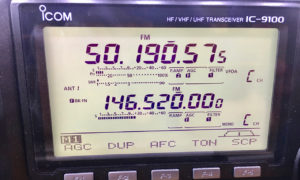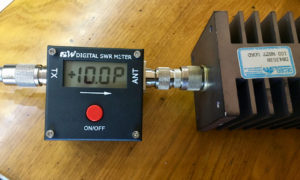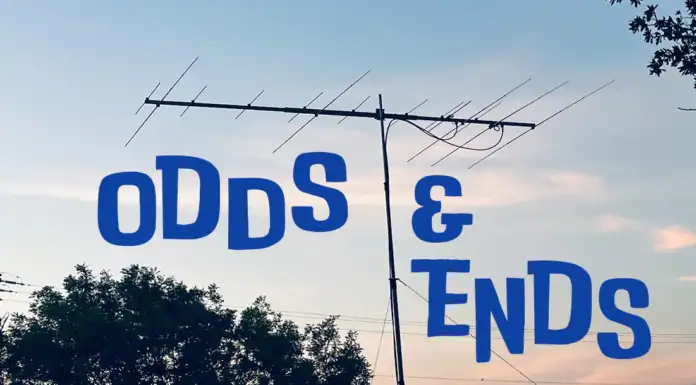As you may have caught in my earlier blog post ARRL June 2019 VHF Contest Rover Route, I’m planning on heading to the Texas Panhandle for the contest. While there, my hunch is that 2 m and 70 cm contacts will be few and far between. So I’m gearing up for what will hopefully be lots of Es and meteor scatter contacts on 6 meters.
To help with that effort I’ve added a TE Systems 0510G 6 meter amplifier set up for 10 watts in and 170 watts out. It will be driven by my IC-9100 set to 10 watts. Long term, I’m hoping to add 2 m and 70 cm amplifiers with similar 10 watts input and the Limited Rover maximum output of 200 watts for 2m and 100 watts for 70 cm. That will also set things up to run 1.25 m via the 28 MHz band as an IF, also at 10 watts out into a transverter. Getting there will take some time and funds. But I figure 6 meters will be a great start in the June VHF contest.
TE Systems 6 Meter Amplifier
While their online ordering is non-existent, they were helpful over the phone with straightforward ordering, building, shipping, and delivery. I like the looks and while the IC-9100 has a built in preamp, I look forward to using their amplifier’s internal preamp.
My only concern was setting up the IC-9100 to drive the amplifier at the correct level. Toward that end I purchased a Red Dot 2017A wattmeter that covers 1.6 to 60 MHz at 199 watts. I already have the 1050A that covers 100 to 500 MHz at 120 watts and found it quite useful and suited my budget.
Testing
As you can see from the photo above, I connected the amplifier output to the Red Dot wattmeter and that into a Bird Termaline 6154 as the load. I sure wish the 6154 worked. I purchased it on eBay and found that the calibration is significantly off — and that the vendor is off eBay entirely. But the Red Dot will serve as my standard (for what that’s worth).
I also wanted to determine how best to set the IC-9100 output to 10 watts. In the nearby photos you can see the setting on the IC-9100 for 10 watts out. I also found that measuring the output of the amplifier with the amplifier switched out resulted in the same 10 watts measured.
This then helped me run through setting the IC-9100 output and measuring the resulting TE Systems Amplifier output. For my set up 10 watts in resulted in 135 watts out. I’ll note that the power supply voltage present at the amp is 12.5 V. So there is some I²R loss in the power cord.
Bumping the measured power input to 12 watts resulted in 150 watts out, while 16 watts input hit the 170 watts rated power. Yet again, there are at least three different sources of error in my set up. In addition, I certainly wouldn’t want to overdrive the amp and end up generating some costly repairs.
Setup
Along the way of making measurements, I noted the settings on the IC-9100 display versus amplifier in/out power levels and developed a small table of where to set the rig to get a specific output power. My hunch is that I’ll run at about 150 watts.
Right now the amplifier is setup in my home ham shack running into a Cushcraft MA-6V vertical dipole for 6 meters. While a vertical isn’t the best for 6 meters, I have been able to work Scotland on it. See Top 10 Six Meter QSOs for more insight.
For contest rover operation, I’ll be running into a Par Electronics Stressed Moxon and powering it through an auxiliary battery. I’m expecting to add a battery booster before the contest as well.
Can’t wait to really test this out with some Es openings on 6 meters — which should start happening soon.
That’s the update here. Always something new and interesting to choose from in this fantastic hobby of amateur radio.
Update — Occasionally, I receive inquiries about the schematic for this amplifier. Here’s the photo I have that should help. Click this link for the pinout of the remote connector. rem cntrl RJ-45 101512










[…] TE Systems 6 Meter Amplifier — Testing and Setup […]
[…] first DC power up, my older TE Systems 170 watt 6 meter amp was completely dead. Couldn’t find the issue, so set up […]